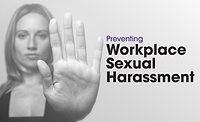Workplace anxiety is a serious condition that affects two out of every five workers. Chances are one or more of your co-workers is dealing with it right now. If an owner or leader in the business happens to be one of them, its impact could directly influence decisions that may lead to stalled growth and side effects to the company culture and performance. If an employee is affected, it could result in turnover or lower levels of achievement. Workplace anxiety is happening daily throughout the restoration industry. Consider the following two scenarios.
Each work day starts the same: get in the car and forge through traffic to make it to work—an environment you once enjoyed because of the camaraderie you felt and the challenges you tackled. But now that morning drive feels like a bus ride to Leavenworth. You are engrossed in an overwhelming sense of discouragement and anxiety. Your heart races; each beat intensifies. In your mind you imagine the countless disasters that await you at your desk.
Or, in scenario two, your drive in was pleasant, but that blasted phone call comes in. You know the one—the call that makes your head start spinning. You want to be mad at someone else, but know it’s your job to handle the situation. You need to fire an employee, but you met his kids and you know what they are going through. A “bats in the belfry” homeowner is pressuring you to schedule another meeting and is threatening a lawsuit. Your bookkeeper keeps reminding you how dangerously inflated the A/R has become. Your banker noticed, too. Your daughter’s recital is tonight, and she has a speaking part. You told her you would be there, but you’re not sure you’ll be able to keep your promise. Deep down your mind races to figure out what you could have done to prevent this. Never mind that it’s only 11 a.m. and you still have hours left in the day. It’s the only thing you can focus on. As your breathing increases and the sweat beads up, you panic. Is this your fault? You freeze from the loss of control.
Anxiety is the body’s natural reaction when confronted with fear, danger, or a threat. It’s the “fight or flight” response. Workplace anxiety is a learned response to stress and differs from general anxiety disorders, as the symptoms are specifically related to the workplace environment. Triggers include public speaking/speaking up in meetings, working in groups, fear of not making deadlines, challenging workplace demands brought on by events such as CAT work, and worrying about not meeting the expectations of yourself and others. Workplace anxiety is real. It is more common than you might think, and it can be debilitating. But it can also be managed.
The Anxiety Disorders Association of America provides the following statistics: 72% of people who have daily stress and anxiety say it interferes with their lives at least moderately, and 40% experience persistent, heavy stress or excessive anxiety in their daily lives. Those suffering from workplace anxiety may pass up promotions, make excuses to avoid office parties and meetings, be unable to consistently meet deadlines, and allow the fear they experience at the office to affect their lives at home.
Ego and social upbringing tell you to suck it up and deal with it. After all, everybody has stress. Especially in the restoration industry where the average project manager overseeing water losses may handle over 40 jobs in a month, and during CAT work, 100 hours a week is expected. But you worry others will take notice and begin to think you’re not strong enough. You can hide the fear, but know you can never outwork the damage it will cause. This knowledge causes you more stress and fear, so the cycle continues.
Most current methods for dealing with work anxiety and high job stress are extremely unhealthy. Of those who admit they are suffering, 31% consume more caffeine, 27% smoke, 23% take over-the-counter medication, and 20% consume more alcohol. Women are more likely to increase their eating habits, while men turn to illicit drug use. All the while, fewer than 40% have spoken to their employer or attempted to seek help. The fact is, most companies in restoration are small businesses, and in many cases, small businesses lack the resources to provide adequate assistance.
Whether anxiety is discernable in yourself or in others, identifying the symptoms is vital. They include:
- Increased irritability or aggressiveness
- Avoiding social situations or withdrawing from co-workers
- The inability to focus or concentrate
- A decreased tolerance to stress and working within challenging situations
- Feeling overwhelmed by everyday pressures
- In extreme circumstances, panic attacks and breakdowns
Working in restoration is fast-paced and difficult. You knew when you got into the industry that it would involve insane hours and seemingly unparcelled stressful situations. But you still must learn how to manage the stress and anxiety. You must not allow massive amounts of it to become normal. Sadly, four in 10 workers, 44% of men and 36% of women, believe that persistent stress and/or excessive anxiety are a normal part of life. But that belief is wrong.
Anxiety is not reality, though it may feel like it. Suffering quietly on your own without confronting it does not make you stronger, braver, or better than anyone else. It only proves that you are scared or stubborn. Admitting that you are dealing with anxiety and searching for ways to help you manage it does not make you weak or demonstrate an inability to perform your job. It shows that you care enough about yourself and your company to fight back. It shows true strength and bravery. Even though restoration is an industry centered around getting your hands dirty and powering though tough times, it is important to not endure quietly on the outside while your head races on the inside.
Anxiety stems from your inner monologue. It’s the constant stream of thoughts that affect your mood and energy. When those thoughts turn to visons of peril or failure, fight or flight kicks in. When you foresee dire consequences and experience thoughts like, “this meeting will be a disaster” or “why can’t I do anything right?” it overtakes your perception of the situation. It invites the excessive heartbeats and cold sweats you fear the most. It robs you of your power.
Thinking this way is just a habit. And, like most habits, it can be changed. But positive thinking alone isn’t the antidote. Instead, choose realistic thinking.
Example: You have an opportunity to meet with a commercial property manager to handle a potentially large mold job that will generate significant dollars and potential future business for your company. You worry you will panic and say something wrong during the meeting, causing you to lose the sale.
Realistic thinking: Tell yourself, “This meeting will probably go well. I’m usually articulate and I know we can meet their timeline and expectations. And if things don’t go perfectly, it won’t be the end of the world. We will take care of business, and that’s what will be remembered.”
When you honestly challenge the negative thoughts, you may find answers that give you back the control you need. On the next page are some other tips that can help you manage stress and anxiety at work:
- Dive into the project and focus on the task at hand. Accomplishing small tasks one at a time increases self-esteem and your social identity.
- Confide in a trusted coworker. Knowing someone else is aware of your anxiety and doesn’t think any less of you for it can be comforting and reduce any anticipatory anxiety.
- Educate yourself. Learn to recognize the symptoms and strategies for how to overcome them.
- Plan, prepare, and ask for help. Get started on major projects as early as possible. Make to-do lists and prioritize. If you have too much on your plate, delegate or ask for help. You may be able to return the favor down the road.
- Be realistic and communicate. Don’t overcommit on projects. Speak up by calmly and diplomatically explaining your plate is already full. Others may not realize how much work you currently have. There is power in the word no.
- Stay organized. Cleaning your desk may not fall high on your priority list but it will save you time and avoid a potential crisis later. Plus, it feels good to see a clean, orderly workspace.
- Avoid toxic coworkers. Ignore negativity and sidestep the gossip.
- Set boundaries. Do the work that coincides with your role in the company. Don’t go out of your way to handle other people’s responsibilities, and try your best not to bring work home with you.
- Take breaks when needed. If you get overwhelmed in the middle of the day, a walk around the block will clear your head.
- Savor success. Take time to relish the moment and appreciate each win.
- Remember why you work in the high-stress world of restoration. There is no greater feeling than knowing you played a part in giving a family their home back.
Struggling to overcome personal challenges is innately human. It is the most real task any of us could ever attempt to accomplish. Tom Hooper, director of the Academy Award-winning film, The King’s Speech, discussed the need to overcome stress and anxiety when he said, “I think we all have blocks between us and the best version of ourselves, whether it’s shyness, insecurity, anxiety, whether it’s a physical block, and the story of a person overcoming that block to their best self. It’s truly inspiring because I think all of us are engaged in that every day.” The main point when dealing with workplace anxiety is not to hide from it, run from it, or let it make you believe you are any less because of it. If you have a bad moment, don’t let it derail you. Change doesn’t happen overnight. Keep trying. As a well-known Japanese proverb instructs: [if you] fall down seven times, stand up eight.







Report Abusive Comment